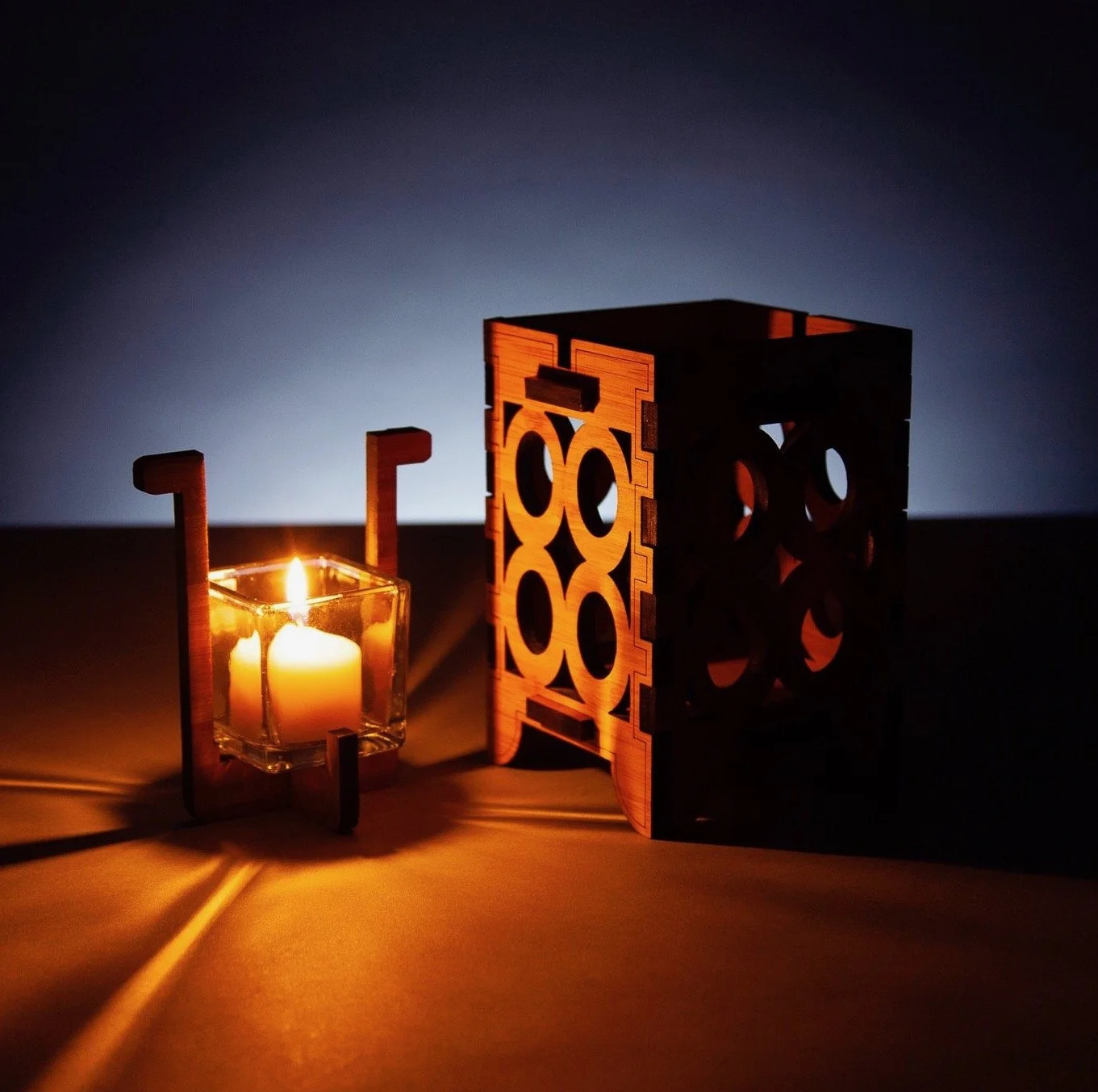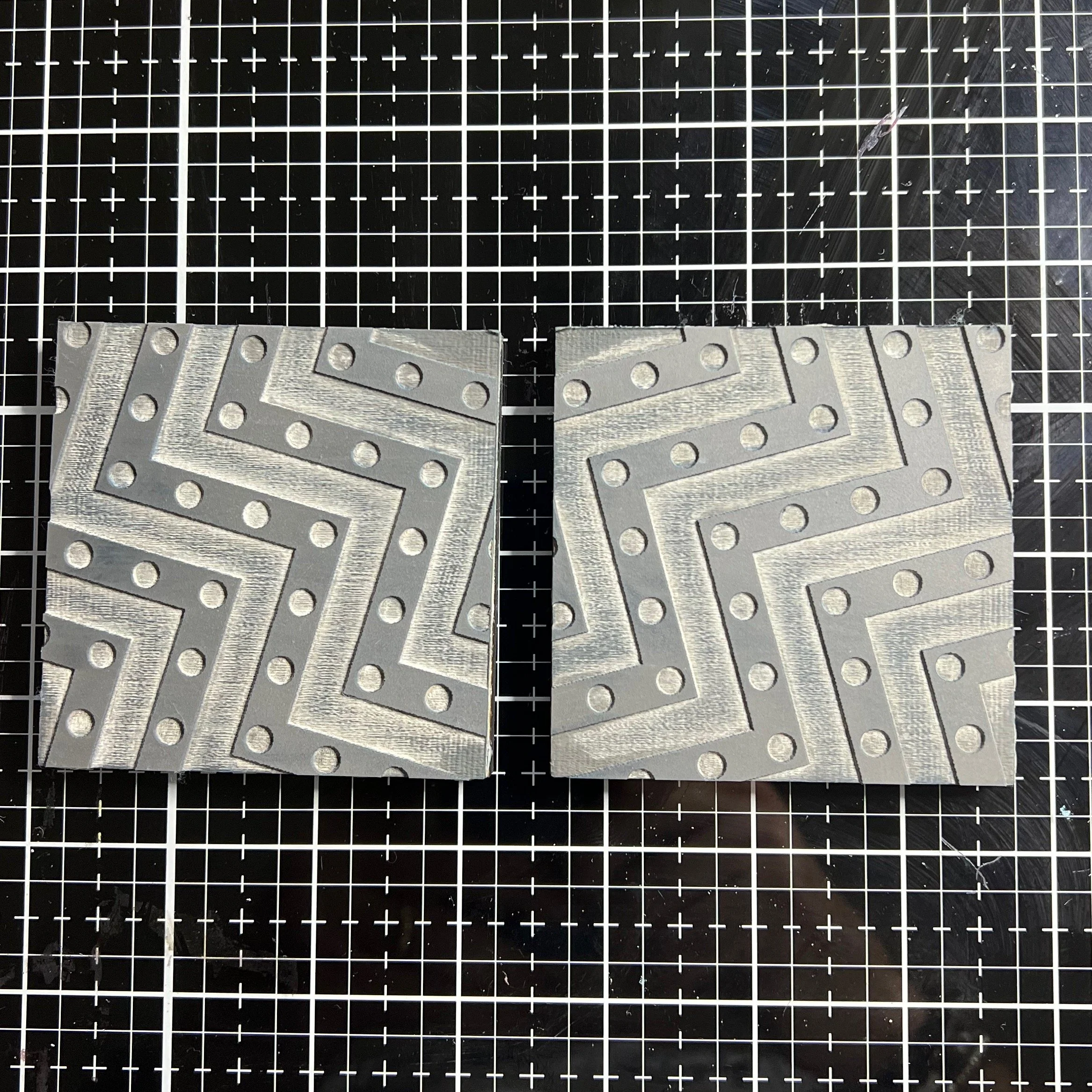From Bamboo to Wax: The Tools and Teachers That Shaped My Art
People often ask how I developed my current style and approach. The truth is—it didn’t happen overnight. It’s been an evolving journey of exploration, experimentation, and learning from artists whose generosity and skill opened doors I hadn’t even known existed.
My “Ovals” Bamboo Candle Lantern, 2018
I’ve always been drawn to candlelight, so my earliest creative work focused on making candle lanterns. At Artisan’s Asylum, a collaborative maker space, I learned to use laser cutters to turn bamboo into sculptural forms based on my own designs. It was the first time I saw how digital tools could turn an idea in my head into a physical, functional object—and that experience changed the way I thought about what art could be.
While at Artisan’s Asylum, I took a class on using laser engraving to make custom stamps. That class introduced me to the basics of printmaking and opened up a whole new world. I began engraving my own stamp designs and hand printing patterns onto thin papers using ink pads—playing with repetition, rhythm, and texture. It was a breakthrough moment. Suddenly, I wasn’t just making objects—I was building compositions.
Not long after, I discovered the work of Toronto-based artist Jane Monteith, who introduced me to encaustic techniques. One that really resonated with me involved printing ink on delicate paper and infusing it onto wax-coated panels. As the paper vanished, the pigment remained—trapped in the surface of the wax. It was like magic. I had found a new way to merge my design work with tactile surfaces, and it unlocked a whole new way of thinking about layering and depth.
Wayne’s workshops are inspiring
Then came Wayne Montecalvo, a digital artist whose encaustic work was a revelation. Wayne showed me how to print digital designs on thin rice paper and embed them into wax. As someone with a background in Illustrator and digital graphics, this method was a perfect fit. For the first time, I could bring my digital work into the physical world, combining sharp graphics with the organic feel of wax. It was the moment my analog and digital worlds truly came together.
Shary uses traditional kistkas and electric wax writing tools to create her textures
And then there was Shary Barlette—an artist who works with traditional and electric wax-writing tools. Inspired by her approach, I started using a wax stylus with a drawing tip. It works much like a fountain pen—you dip the heated tip into encaustic wax, and depending on the pressure and movement, you can create fine lines, dots, or textured marks. It was the discovery of that drawing tip that allowed me to create the individual dots that now appear in all of my compositions. That tool became the key to bringing my mark-making into wax with intention and personality.
By combining what I learned from Wayne, Shari, and Jane, I arrived at a process that informed my signature style: the marriage of digital design, digital print, encaustic, and wax drawing tools. That combination has allowed me to create work that is vibrant and transformative—filled with color, texture, patterns, and dimension.
The possibilities are endless.




